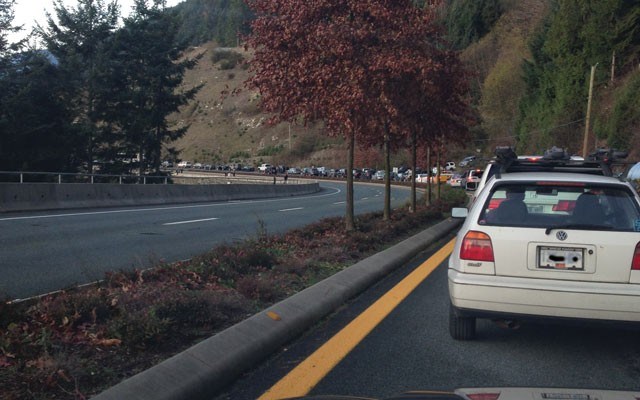Last week, the B.C. Government announced the construction of a concrete barrier along a stretch of Highway 99 in Lions Bay that has been the site of several serious crashes in recent years — including one that claimed the life of a Whistler resident.
The barrier will replace a landscaped median dividing the four-lane section of highway, and is intended to prevent head-on collisions and other crossover accidents. The median barrier will also have reflector strips to improve visibility at night and in bad weather conditions.
It's all part of the Ministry of Transportation's (MOTI) $800,000 safety improvement plan for the Sea to Sky Highway, which averages roughly 150 collisions a year.
"Safety improvements are the No, 1 objective for the MOTI right across the province," said Sea to Sky MLA Jordan Sturdy. "It just seemed reasonable to look at replacing (the landscaped median) to make it more consistent with the rest of the highway."
There have been numerous calls in recent years to replace the median. The push came to a fevered pitch two years ago following an accident that killed Whistler resident Marie-Pier Champagne and severely injured Olivia Rey. An online petition launched in 2014 to erect a concrete barrier, which followed another crash that claimed the lives of two UBC students, garnered over 3,300 signatures.
After working with Victoria for the better part of two years on the project, Lions Bay Mayor Karl Buhr was happy to see the barrier come to pass. "In all, I'm very pleased," he said. "I'm satisfied with where it is because this is a dangerous stretch."
The layout and curvature of the highway presented challenges to engineers designing the barrier, Sturdy said, which helps to explain why it will be erected only along a 1.4-kilometre section of road between Lions Bay Avenue and Brunswick Beach Road. The MOTI has put in place several measures to mitigate the risk of accidents there, Sturdy said, including a speed-activated warning board just north of the Lions Bay turnoff.
Closer to the resort, the province installed 16 variable signs last summer between Function Junction and Squamish that adjust the posted speed limits based on current road conditions. Sturdy said it's still too early to provide any concrete data on the impact the signs have had, but he believes they've been positive.
"All in all, I'm confident we're moving in the right direction here," he said. "That said, volumes are continuing to increase and will continue to increase. We have to keep an eye on capacity and efficient management of that highway." On average, 19,000 vehicle trips are made every day along that section of road, a 24-per-cent increase since 2011.
Squamish resident Lynette Lawther, who was injured in a head-on collision near Brohm Lake back in 2015, believes the barrier is a good step towards improving road safety, but that addressing driver behaviour needs to be the first priority.
"This won't affect anybody's behaviour," she said. "People are going to drive the way they drive anyway, but at least we know we're now safer in that notorious stretch."
One strategy Buhl believes could change drivers' habits is an enforcement approach more common to Europe, Australia and other parts of the world: average speed over distance (ASOD) cameras. Also called point-to-point speed cameras, they measure persistent or sustained speeding over distance, rather than at a particular point in the road. Jurisdictions around the globe have reported significant drops in speeding and road deaths following the installation of ASOD cameras. On a section of Scotland's notorious A9 road, for instance, the number of fatal and serious accidents dropped by 59 per cent in the first year of the new cameras. At a site in the Netherlands, crashes dropped 47 per cent, while fatalities went down a quarter. Buhl said he's preparing to lobby Victoria to install the cameras as a possible pilot project in Lions Bay, although he admitted there hasn't been a lot of political buy-in for the enforcement tactic at this point.
Whistler's Rey, who suffered multiple fractured vertebrae and lost the use of her legs as a result of the November 2015 accident, launched a lawsuit in late summer that accused multiple parties — including the MOTI and the Village of Lions Bay — of negligence. The civil case remains before the court.




